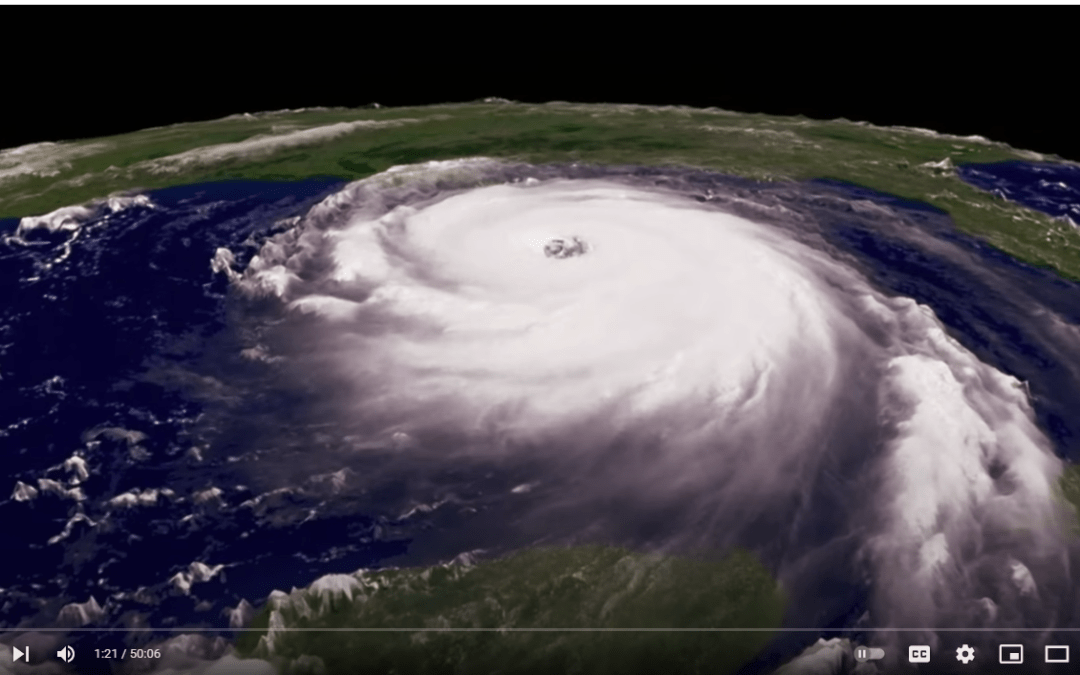urricanes can unleash devastating destruction through powerful winds, storm surges, and torrential rains, causing catastrophic damage and loss of life. Lessons from Hurricanes Katrina and Maria highlight the need for improved infrastructure, better communication, and comprehensive disaster preparedness to mitigate the impacts of these extreme weather events.
Key moments:
00:35 Hurricanes can unleash immense energy, causing devastation with rain, winds, and storm surges. The video explores Hurricane Katrina in 2005 and Hurricane Maria in 2017, highlighting the catastrophic impact on low-lying areas and the need for preparedness.
-The impact of hurricanes on low-lying areas and the importance of preparedness. Hurricanes Katrina and Maria serve as examples of the devastation caused by these natural disasters.
-Development along coastlines and urban growth contribute to the vulnerability of cities to hurricanes. The role of warm sea temperatures in the formation of hurricanes is also discussed.
-The categorization of hurricanes based on wind speeds and the Saffir-Simpson scale. Categories range from 1 to 5, with each level indicating the potential damage and risks associated with the storm.
06:37 Hurricanes are known for their eye, eyewall, and storm surges, with water causing 90% of fatalities. Tornadoes, floods, and landslides are additional hazards associated with hurricanes.
-The significance of the eye and eyewall in hurricanes, where the strongest winds are found, and the role they play in the storm’s intensity.
-The devastating impact of storm surges caused by hurricanes, leading to fatalities and destruction, with water being a major threat in tropical systems.
-The lesser-known hazards associated with hurricanes, such as tornadoes, floods, and landslides, which can occur far from the hurricane’s center, posing risks to areas not directly hit by the storm.
12:41 Hurricane Katrina rapidly intensified from a category 1 to a category 5 storm as it moved from Florida to the Gulf of Mexico, leading to a state of emergency declaration and mandatory evacuations in Louisiana, Alabama, and Mississippi.
-Preparations for Hurricane Katrina included closing infrastructure, setting up emergency shelters, and ordering mandatory evacuations in New Orleans, despite some residents choosing to stay.
-The impact of Hurricane Katrina’s storm surge caused extensive flooding and breaches in flood protection structures, highlighting the need for improved infrastructure and preparedness in coastal areas.
-The aftermath of Hurricane Katrina saw devastating destruction of infrastructure, challenges in rescue coordination, and communication failures hindering relief efforts in New Orleans.
18:43 The lack of functioning cell towers in New Orleans during Hurricane Katrina led to communication issues, but news crews helped show the world the devastation, highlighting the importance of effective reporting during disasters.
-Challenges faced in New Orleans due to failed communication systems during Hurricane Katrina, emphasizing the impact on getting aid to the right places at the right time.
-The crucial role of news crews and reporters in showcasing the situation in New Orleans to the world, underscoring the significance of accurate and responsible reporting during crises.
-Issues with the federal response system and lack of preparedness for natural disasters like Hurricane Katrina, highlighting the need for improved disaster planning and response strategies.
24:55 Hurricane Katrina devastated New Orleans, leading to flooding, contaminated sites, and health risks. The city’s lack of natural defenses and outdated levee system contributed to the catastrophic impact of the storm.
-The aftermath of Hurricane Katrina included contaminated sites, health risks, and flooding, affecting numerous people in New Orleans.
-The outdated levee system in New Orleans, combined with the city’s location below sea level, exacerbated the impact of Hurricane Katrina, leading to widespread devastation.
-Despite the lessons learned from Hurricane Katrina, New Orleans continues to face the risk of flooding, prompting the construction of new and improved levees and flood walls.
30:50 The city of New Orleans is rethinking its approach to dealing with excess water, facing challenges with hurricanes due to its coastal location. Hurricane Maria’s unprecedented devastation on Puerto Rico in 2017 highlighted the need for accurate storm data collection and communication for disaster management.
-Challenges of dealing with hurricanes in densely populated coastal areas like New Orleans. The need to update outdated methods for managing excess water.
-The unprecedented devastation caused by Hurricane Maria on Puerto Rico in 2017. The importance of accurate storm data collection and communication for disaster preparedness.
-The role of hurricane hunters in collecting crucial storm data. The significance of flying into storms to gather information for accurate forecasting and public safety.
36:54 Hurricane Maria hit Puerto Rico with devastating force, leading to evacuations, widespread flooding, and destruction of infrastructure. The island faced challenges with communication, power loss, and shortages of essential products.
-Evacuations were carried out as residents faced life-threatening consequences, with warnings of flooding and other hazards. Temporary shelters were set up as people heeded evacuation orders.
-The impact of Hurricane Maria included overwhelming reservoirs, leading to flooding and evacuations. The storm caused extensive damage, with thousands of people affected and in need of rescue.
-The aftermath of the hurricane resulted in power loss, communication breakdowns, and shortages of essential products. Residents faced challenges with access to electricity, water, and communication.
42:57 Hurricane Maria devastated Puerto Rico, causing a humanitarian crisis worsened by logistical challenges and government restrictions. The aftermath highlighted the need for better disaster preparedness and relief mobilization.
-Logistical challenges and government restrictions hindered relief efforts in Puerto Rico, delaying aid delivery and exacerbating the humanitarian crisis.
-Puerto Rico faced prolonged power outages and water shortages, leading to significant hardships for its citizens in the aftermath of Hurricane Maria.
-The impact of Hurricane Maria on Puerto Rico led to a dramatic increase in the official death toll, highlighting the long-term effects of the disaster on the island’s population.

